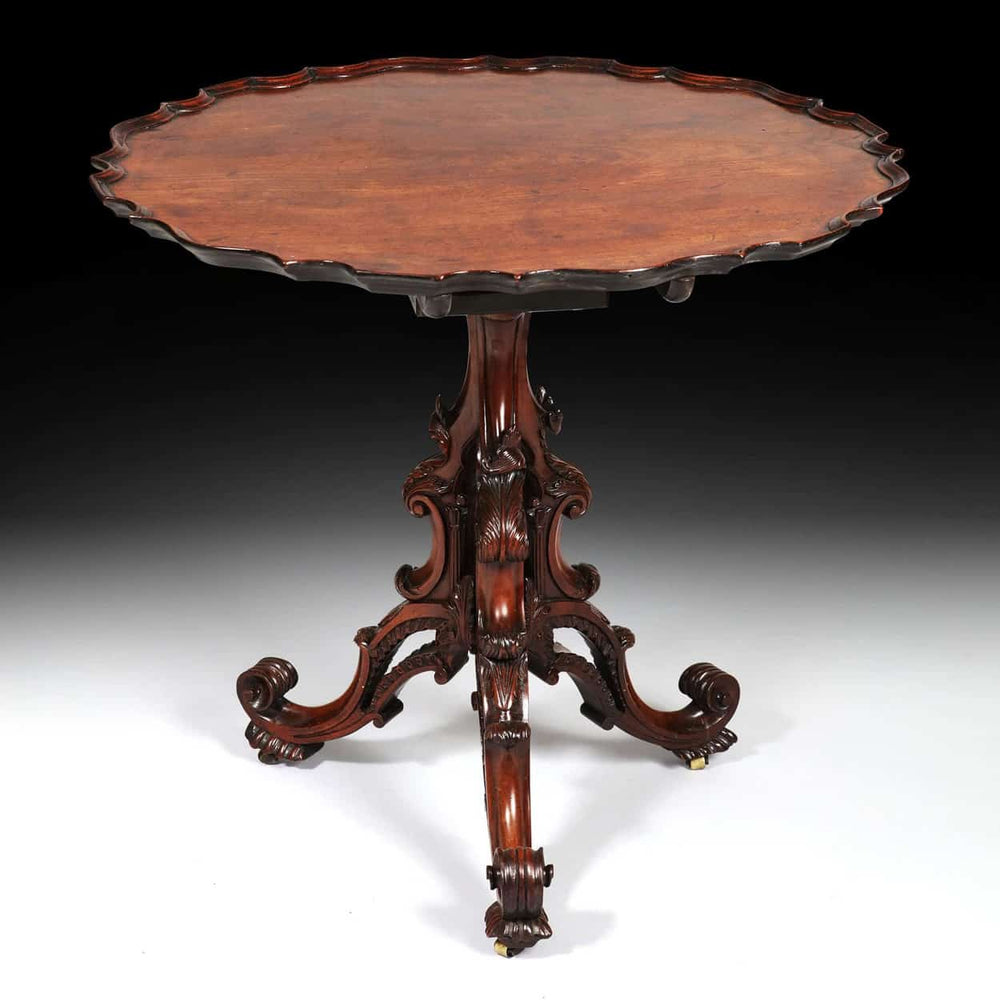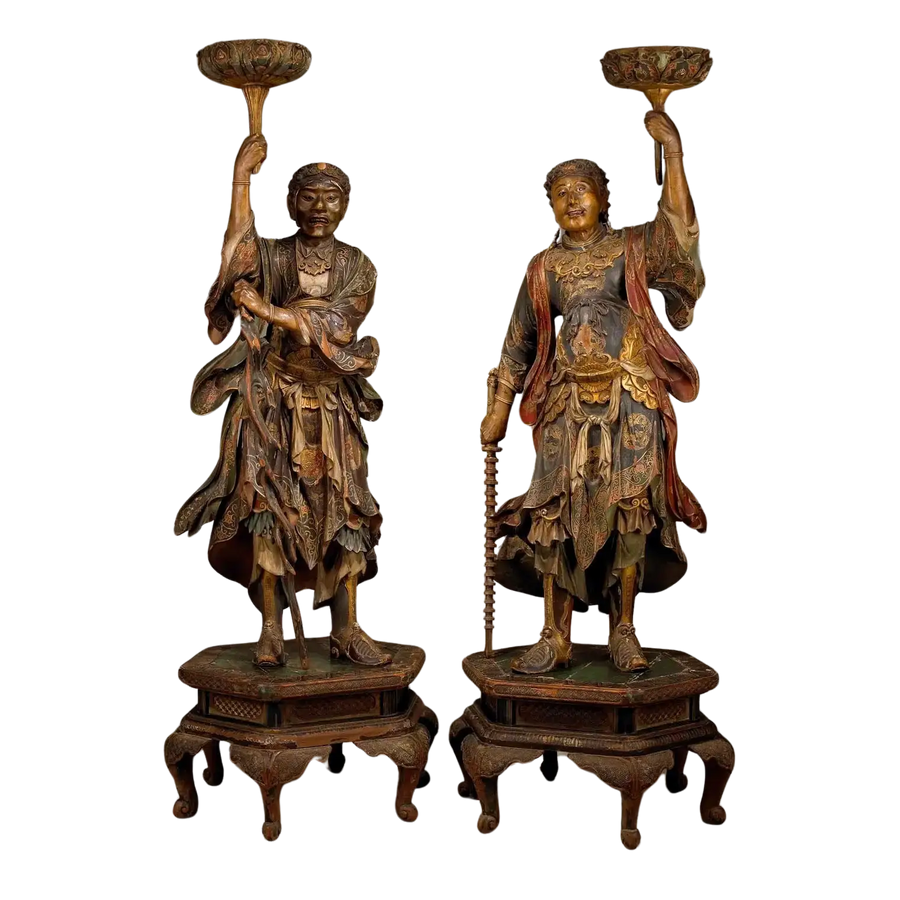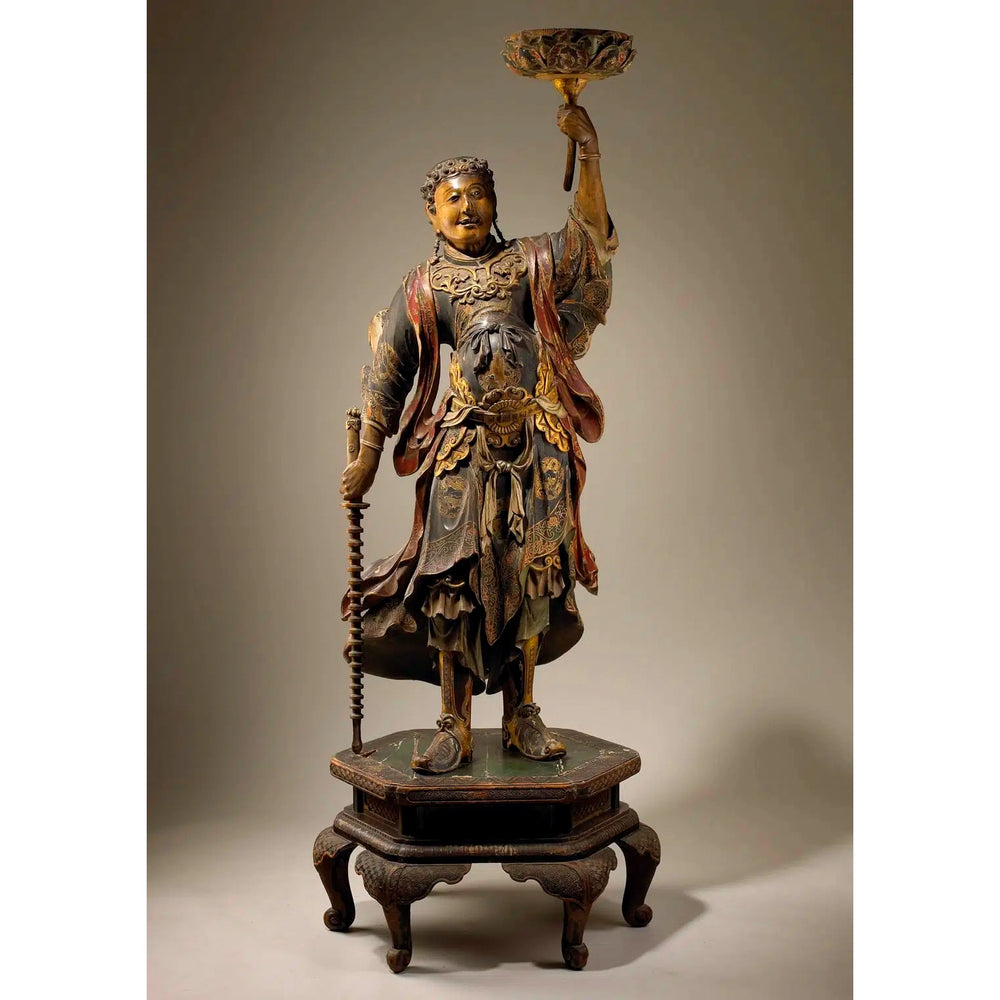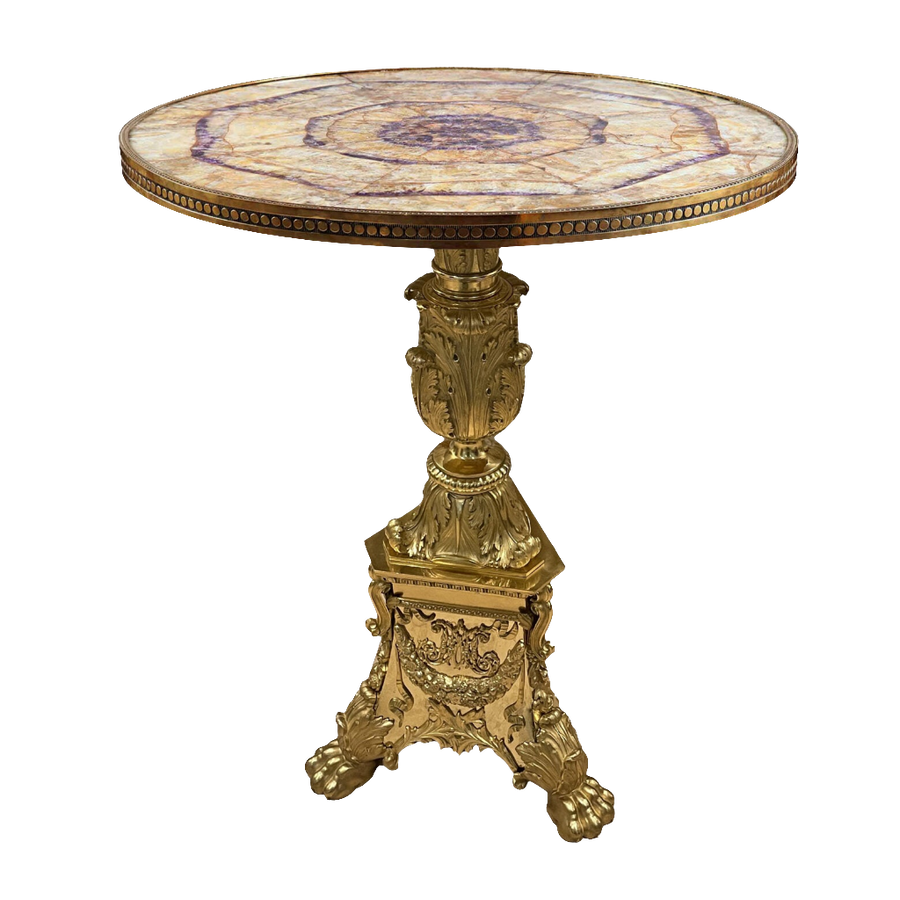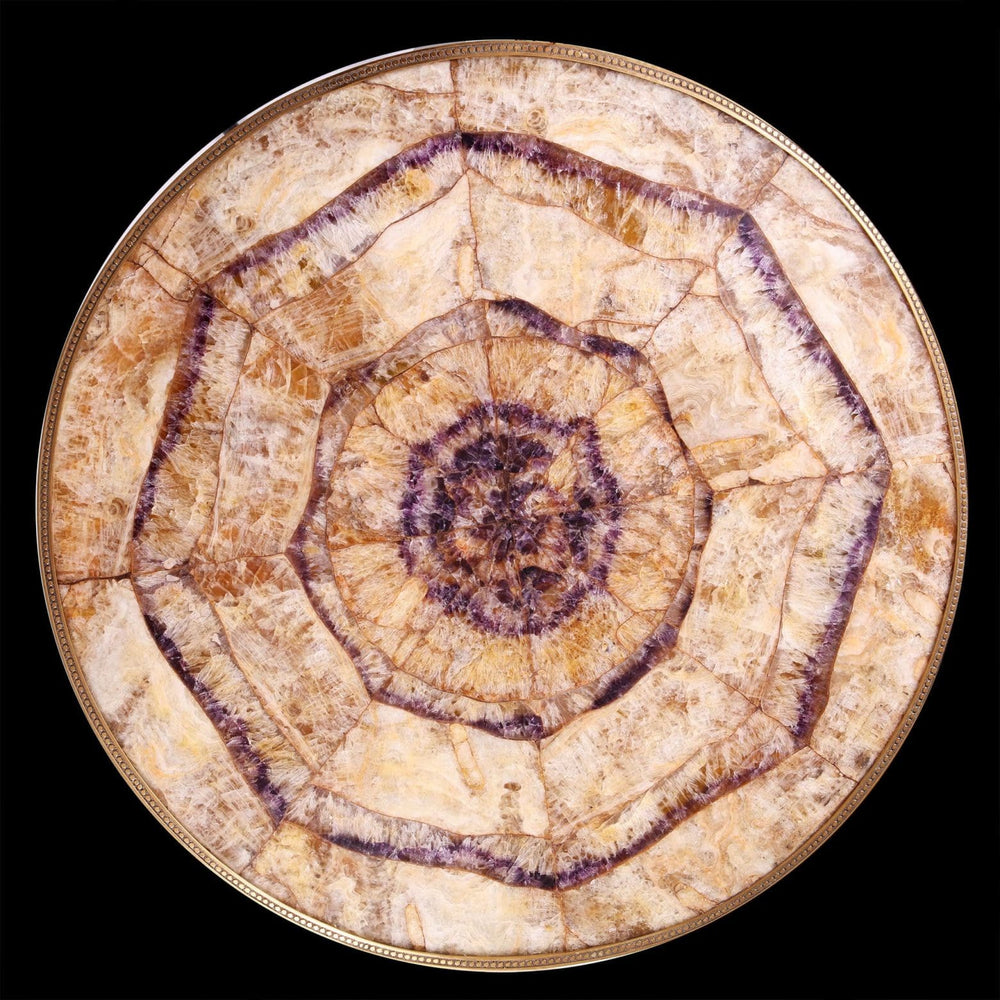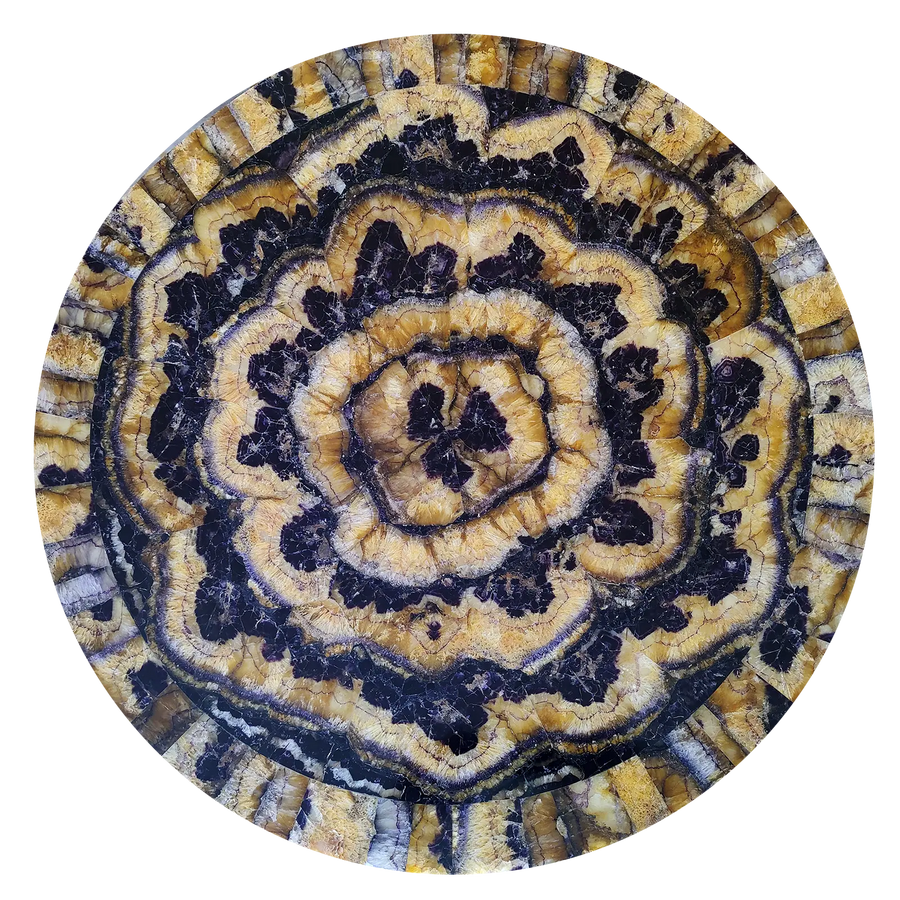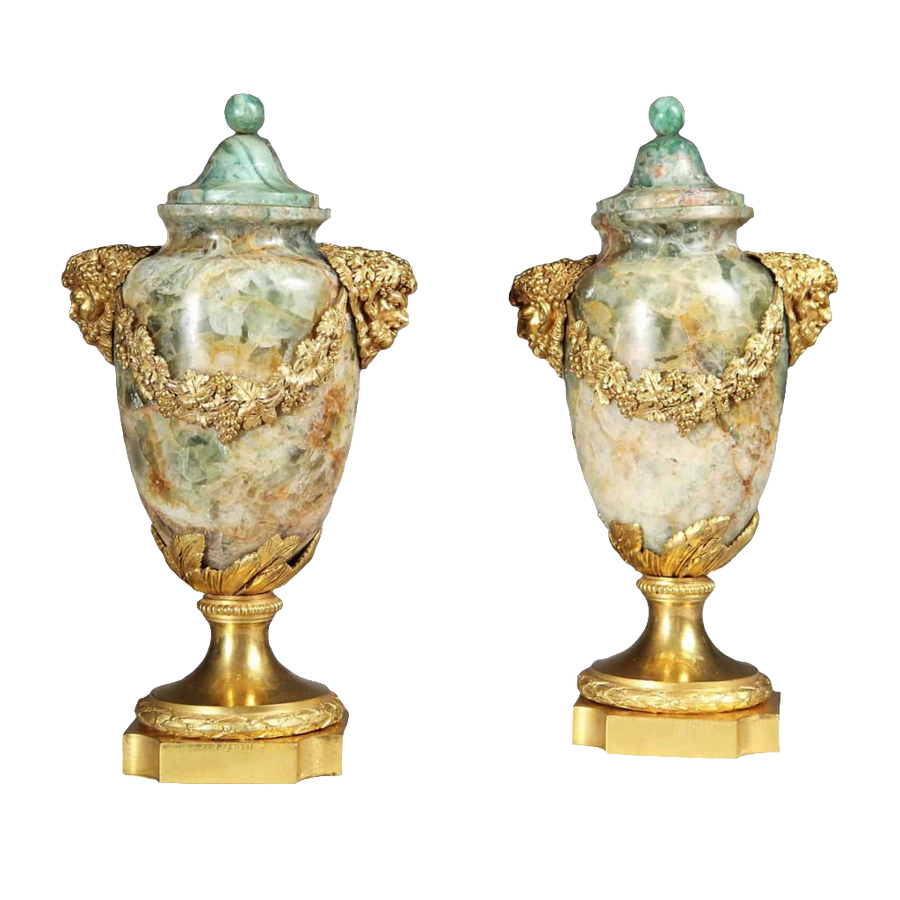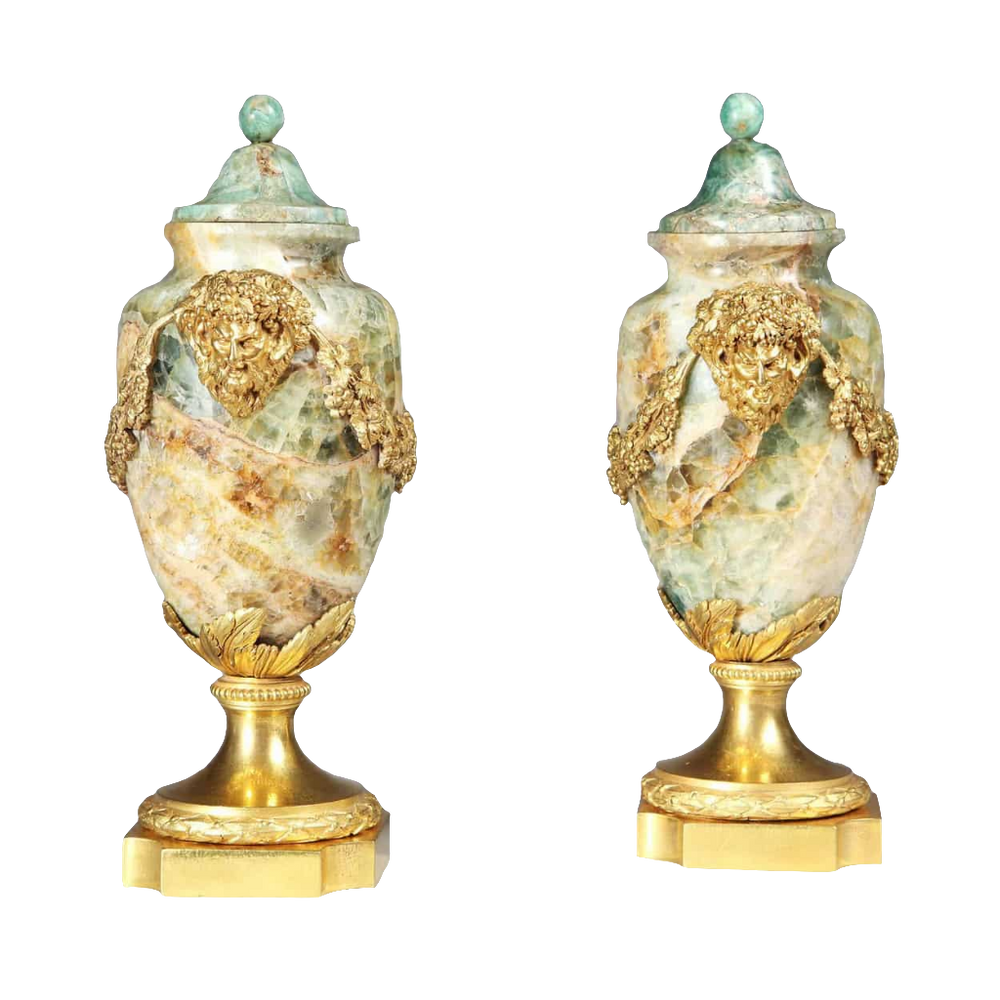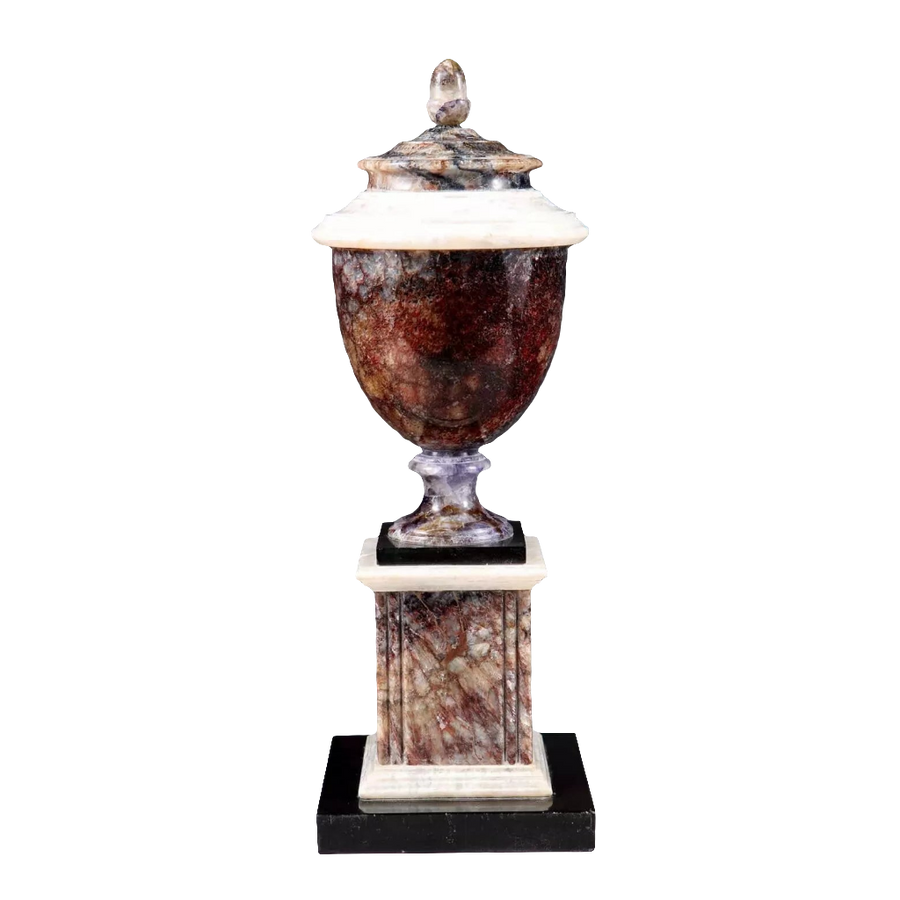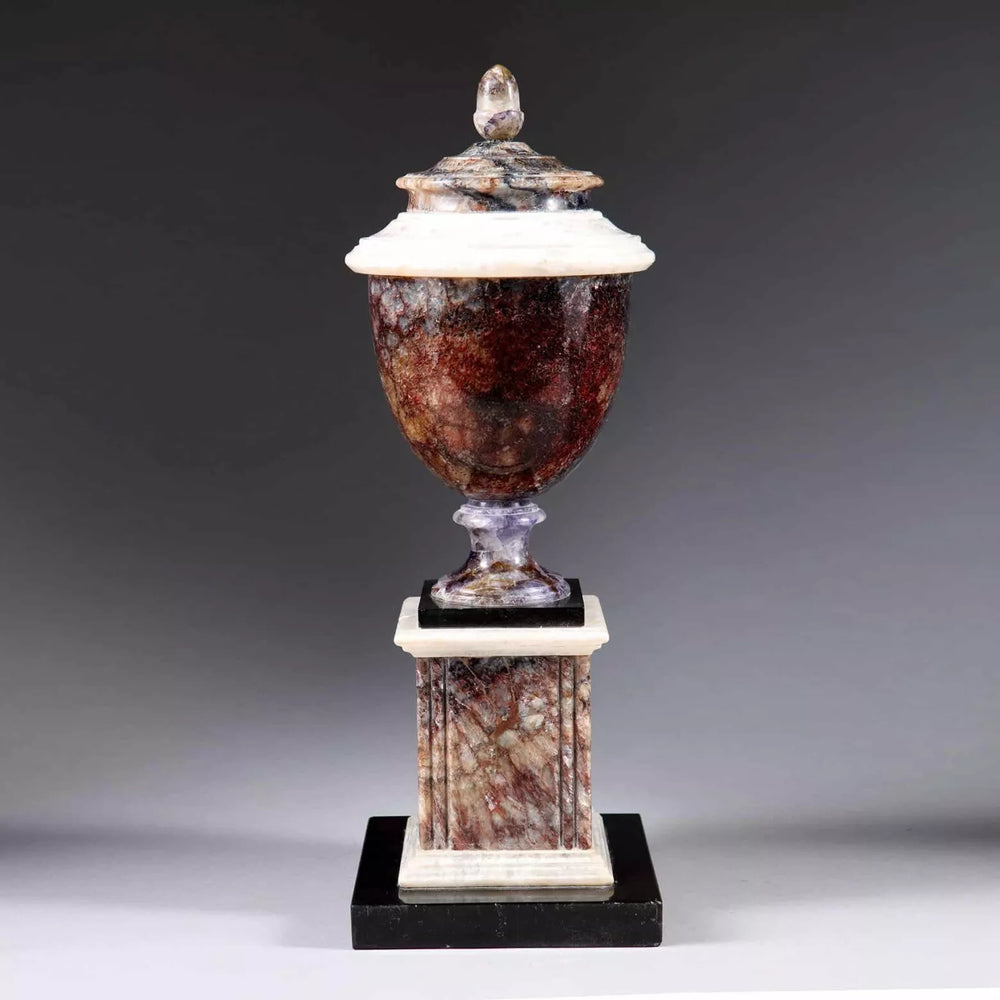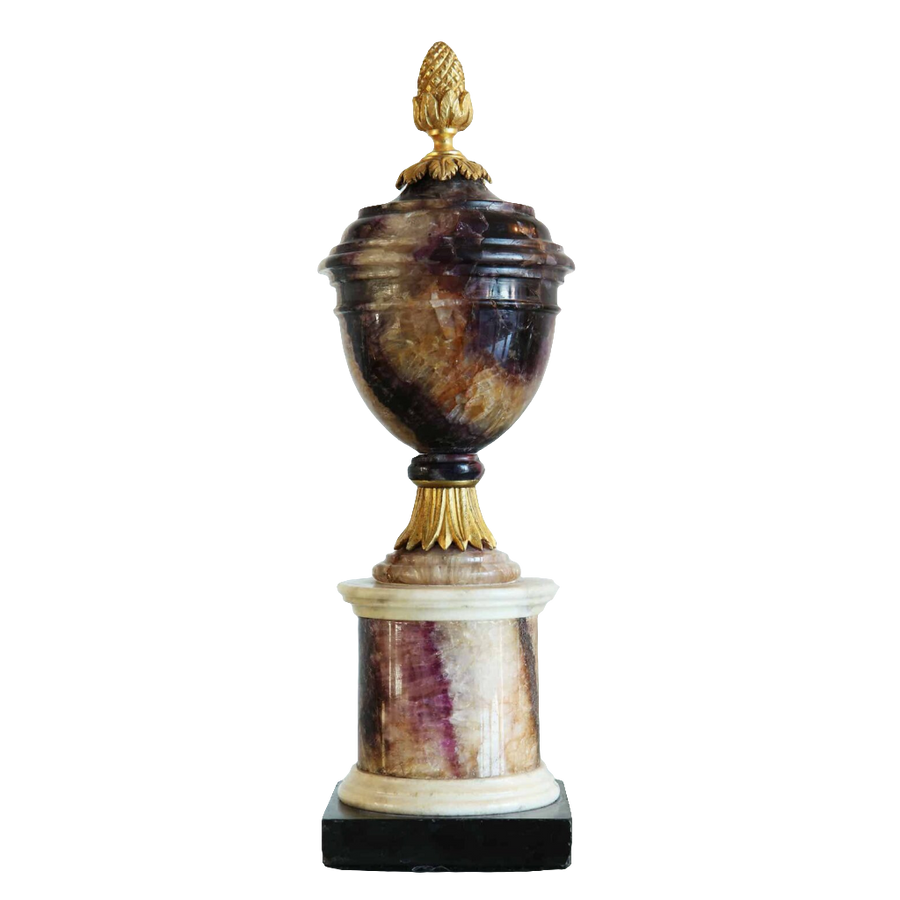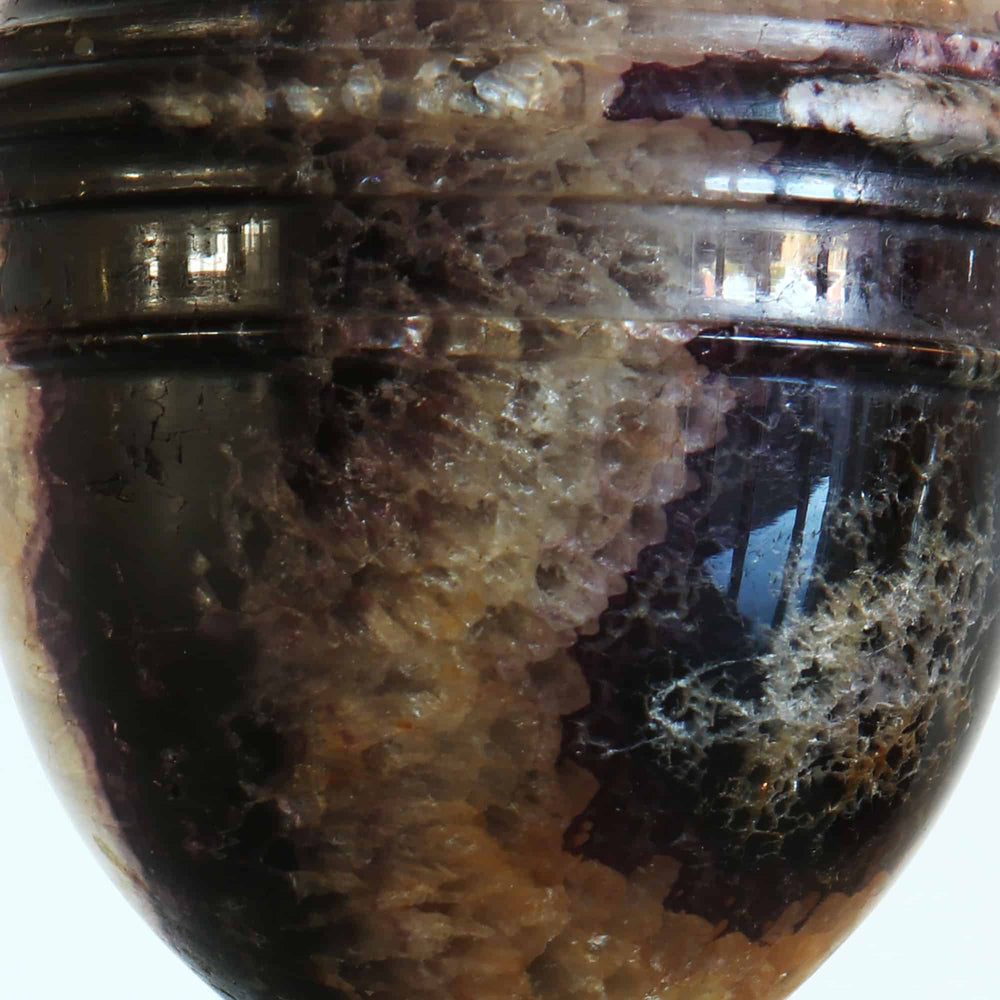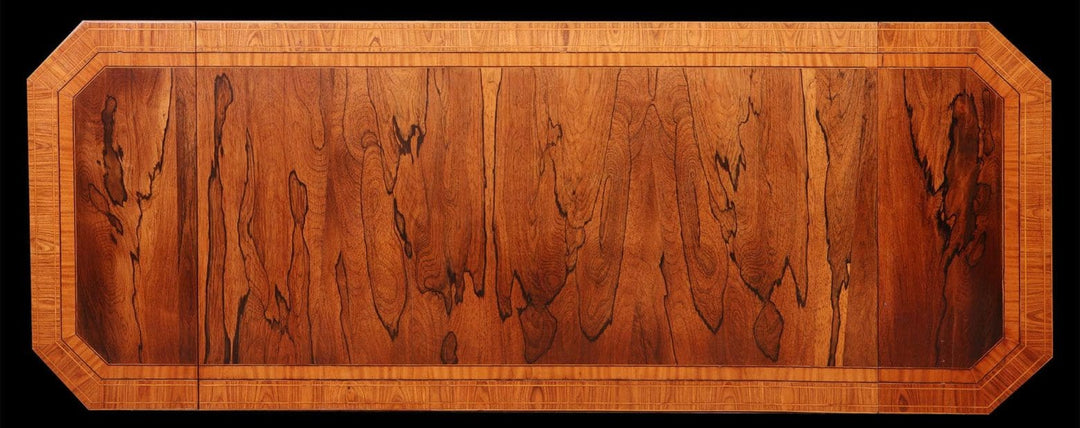
Fluorspar, also known as fluorite, is a mineral admired for its extraordinary range of colours — from colourless and transparent to vivid shades of purple, green, yellow, and blue. It is especially celebrated for its strong fluorescence, which lends the stone a luminous, almost ethereal quality.
Fluorspar and the Rise of Blue John
In the decorative arts of the 18th and 19th centuries, fluorspar was highly valued for its aesthetic appeal. Among its many forms, the most famous is Blue John — a striking banded variety found only in Derbyshire, England. Distinguished by its purplish-blue and golden-yellow veining, Blue John became one of the most sought-after ornamental stones of its time.
Its rarity and localised origin gave it a special prestige, and it was soon employed in the creation of vases, urns, jewellery, and other finely worked objects destined for fashionable interiors.
Matthew Boulton and the Soho Manufactory
One of the great champions of Blue John was Matthew Boulton (1728–1809), the celebrated English manufacturer and industrialist. Known as a key figure of the Industrial Revolution and a pioneer in steam power, Boulton also had a profound influence on the decorative arts.
At his Soho Manufactory in Birmingham, Boulton oversaw the production of exquisite ornamental works that combined the natural beauty of Blue John with luxurious gilt-bronze (ormolu) mounts. Vases, candlesticks, and other objects crafted under his direction demonstrated both technical innovation and refined artistic vision.
Despite the limited supply of Blue John, Boulton’s designs helped to establish the stone’s reputation as one of the most desirable decorative materials of the period. His work not only popularised the use of fluorspar but also elevated it to a place of distinction alongside marble, porphyry, and other prestigious hardstones.
Enduring Appeal
While fluorspar may not be as widely recognised today as some other decorative stones, its unique properties — colour, luminosity, and rarity — continue to captivate collectors and historians. Blue John, in particular, remains a symbol of English craftsmanship and innovation, cherished for its association with Matthew Boulton and the golden age of decorative arts in the late 18th century.
From Derbyshire’s mines to the grand interiors of Georgian Britain, fluorspar’s journey reflects not only the beauty of the natural world but also the artistry and ingenuity of those who sought to shape it.





